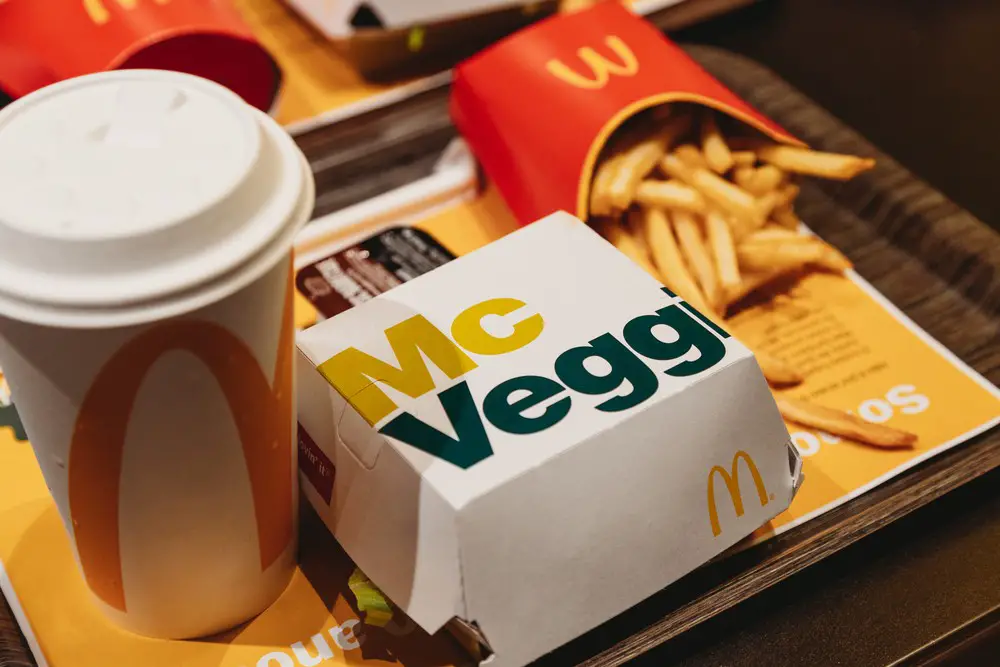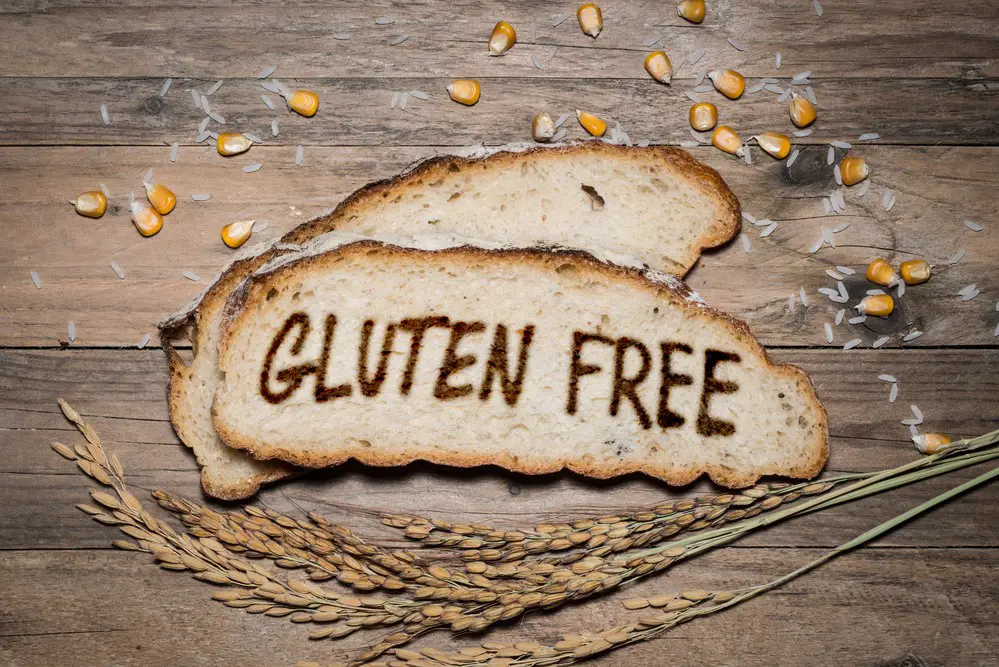Lactic acid is a widely used ingredient produced through carbohydrate fermentation. Thousands of products requiring fermentation contain lactic acid, including sauerkraut, yogurt, pickled foods, fermented soy products, and baked goods. It’s also a food preservative because it lowers their pH, making them more acidic.
Its name is misleading because of the prefix “lac,” which comes from the Latin for milk. Therefore, many people believe it’s derived from milk. Is lactic acid dairy? Most of the time, lactic acid is not dairy since it’s made from fermenting plants or during the natural fermentation process of plants.
However, if you avoid dairy or are vegan, you should know that sometimes it’s not vegan. If you avoid dairy, you should get more information from the food manufacturer if the packaging is not dairy-free.
Understanding this common ingredient is imperative if you avoid dairy or are vegan.
Is Lactic Acid Dairy?
Most lactic acid is dairy-free, but some may contain dairy. Dairy-free lactic acid comes from plant sources.
Dairy products contain lactic acid since it’s naturally present in milk. When bacteria break down the lactose, the sugar in milk, lactic acid forms. Therefore, it’s common to find lactic acid in fermented dairy products like cheese and yogurt. They get their tangy flavor from it.
Lactic acid is also added to milk to pasteurize it as a natural preservative that gives it a longer shelf-life.
However, anyone avoiding dairy would not normally consume these dairy products. However, people with dairy allergies or a vegan diet can consume most lactic acid forms.

What is Lactic Acid?
Pickling and fermentation methods have been around for close to 4,000 years, introducing the lactic acid to them that protects food from microorganisms. These bacteria are also found in the gut.
Fermentation creates lactic acid. Carbohydrates (starch and sugar) are broken down into acids by bacteria. Fermentation happens naturally in some products, such as sourdough or yogurt, but it’s also manufactured by limiting the oxygen exposure when creating pickled foods. Read about the common bacteria used to create lactic acid in this article from Greatist.
Even though it’s a harmless preservative, lactic acid is not used in baby and infant feeds, but the FDA or several uses approve it. These include:
- antimicrobial purposes
- flavor enhancer
- curing and pickling agent
- pH control purposes
- solvent
A chemist first isolated lactic acid from sour milk. Hence, its discoverer, Carl Wilhelm Scheele, named it after the source where he got it from, lactose.
However, other animal and plant food contains it. It’s both an acidifier and preservative, giving foods their tanginess and preventing bacterial growth, which leads to food spoilage.
Therefore, when used in milk, it produces sour milk, and during vegetable product fermentation, like sauerkraut, it provides a longer shelf life.
Which Dairy-Free and Vegan Foods Contain Lactic Acid?
Fortunately, animal-based lactic acid is pricier than its plant-based counterpart, meaning that food manufacturers prefer it. Therefore, dairy-free lactic acid is found in many foods, meaning they are suitable to consume if you have a dairy intolerance or follow a vegan diet.
Therefore, plant-based lactic acid gets added to several packaged foods. Some of these also have probiotic benefits. Some dairy-free and vegan foods containing lactic acid include:
- beer
- miso
- olives
- wine
- kimchi
- tempeh
- sauerkraut
- pickled veggies
- sourdough bread
- apple cider vinegar
- sourdough bread
How to Ensure Lactic Acid is Dairy-Free
Foods like cured ham, salami, and sausages contain natural lactic acid that isn’t vegan but may be dairy-free. On the other hand, the lactic acid found in milk-based products like kefir, yogurt, and cheese is suitable for vegetarians. However, they usually come from milk, meaning the products and the lactic acid are not dairy-free.
Vegan-friendly and dairy-free products will not contain lactic acid from an unsuitable source. Products made with a natural fermentation process, like pickles, olives, and sauerkraut, have the lactic acid naturally.
Moreover, in products where the manufacturer introduces lactic acid, it is usually derived from plant-based sources like beets, cornstarch, legumes, and cereals.
You should know that food companies are not required to disclose the source of the lactic acid used by the FDA. Unless the packaging specifies that a product is dairy-free or vegan, don’t risk using it before getting confirmation from the manufacturer about where they derive it from.
Can You Make Dairy-Free Lactic Acid Products at Home?
Yes, you can make several fermented foods at home, ensuring that you know the source of your lactic acid is 100% dairy-free. The process for pickling at home differs from that used for canning, resulting in a more marinated product than the strong brine used to preserve the product in the canning process.
Vegetables are a great place to start, so pick your favorites and begin pickling cucumbers, onions, cabbage, radishes, green beans, mushrooms, etc.
Your essential ingredients for pickling include boiling water, vinegar, sugar, and salt.
Start by reading the basics of pickling and how to spice things up in this informative article from Epicurious.

Potential Health Benefits of Lactic Acid
Most people have no adverse side effects from eating lactic acid. People with dairy allergies can eat lactic acid sourced from plants. Even though lactic acid is a preservative, it can also lead to quicker spoilage in acidic foods and vacuum-sealed products like tomato-based sauces, salad dressings, and processed meats. Bloated packaging is a sure sign of spoilage, meaning you must throw it out!
Several studies show that eating the bacteria that produce lactic acid seems to help our health in several ways. These include:
- Improved gut health that helps improve the immune system, digestion, and sleep.
- Better nutrient absorption
- Improved antioxidant effects
- Stronger immune system
- Lowered blood pressure
- Decreased lactose intolerance
Tips for Eating Dairy-Free Lactic Acid Foods
When consuming lactic acid-rich products, pay attention to the following:
· Check the label of a product for dairy ingredients or allergens before eating it.
· If you have any doubt about the source of lactic acid, contact the manufacturer directly and ask them to confirm if its dairy-free.
· For pickled foods, check expiration dates and always discard expired food. Spoiled food can be dangerous if consumed.
· Avoid eating unsafe fermentation processes at home because they could contain harmful toxins such as botulism spores from improperly sealed jars with low acidity levels.
Final Take
Natural or synthetic lactic acid has several uses in our foods, including acting as a preservative, flavor enhancer, and controlling pH levels. The science also points to some promising health benefits, meaning it’s also good for you.
However, is lactic acid dairy free? In most cases, yes, especially in vegan and dairy-free products. If unsure, you need to determine the substrate used to culture lactic acid by getting more information from food manufacturers.

FAQs
Is lactic acid dairy?
In most cases, no. Most products that contain lactic acid are either vegan or dairy-free. However, if unsure, it’s important to check with the manufacturer, as some foods may contain dairy-based lactic acid.
What are some vegan and dairy-free foods that have lactic acid?
Some vegan and dairy-free foods with lactic acid include beer, miso, olives, wine, kimchi, tempeh, sauerkraut, pickled veggies, sourdough bread, and apple cider vinegar.
Are there any potential health benefits of consuming lactic acid?
Yes, there are potential health benefits of consuming lactic acid. Studies have shown that it may help improve gut health, the immune system, digestion, sleep, nutrient absorption, and antioxidant effects. It has also been linked to decreased lactose intolerance and lower blood pressure.
Can you make dairy-free lactic acid products at home?
Yes, you can make several fermented foods at home using plant-based sources like beets, cornstarch, legumes, and cereals. Start by reading the basics of pickling and how to spice things up before trying out some recipes!







